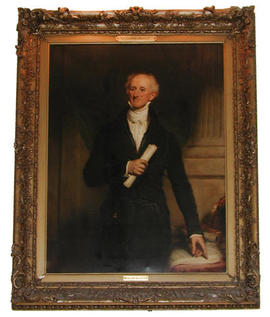- GB-2014-WSA-04010
- Person
- 1766-1841
BRUCE, THOMAS, 7TH EARL OF ELGIN AND 11TH EARL OF KINCARDINE (S), second son of Charles Bruce, 5th Earl of Elgin and 9th Earl of Kincardine (S), and Martha, dau. of Thomas Whyte, London, banker; b. 20 Jul 1766; succ. elder brother as 7th Earl of Elgin and 11th Earl of Kincardine (S), 15 Jul 1771; adm. 5 Oct 1778, having previously been at Harrow Sch.; left 1782; St. Andrews Univ.; Univ. Paris; Ensign, 3rd Foot Guards, 6 Apr 1785; Capt., 65th Foot, 9 May 1789; Maj., local rank on continent, 8 May 1793; Lieut. -Col., Elgin’s Fencible Infantry, 28 Nov 1794-1802, and also of a second Regt. Fencible Infantry, which he raised, 17 Apr 1795-1802; Brevet Col., 29 Apr 1802; Maj. -Gen., 25 Oct 1809; Lieut. -Gen., 4 Jun 1814; Gen., 10 Jan 1837; a Scottish Representative Peer 1790-1807, 1820-41; British Envoy on special mission to Vienna 1790-1; Envoy to Brussels, 18 Aug 1792-4; Minister Plenipotentiary to Berlin, 15 Aug 1795-8; Ambassador to Constantinople, 13 Apr 1799- Jan 1803; Privy Councillor 3 Jul 1799; while in Constantinople employed agents to acquire for him the Elgin Marbles (purchased from him by the British Government in 1816 and deposited in the British Museum); while on way home to Britain from Turkey, detained in France as prisoner of war May 1803- Jun 1806; m. 1st, 11 Mar 1799 Mary, only child of William Nisbet MP, Dirleton, Haddingtonshire; m. 2nd, 21 Sep 1810 Elizabeth, youngest dau. of James Townshend Oswald MP, Dunnikier, Fifeshire; d. at Paris 14 Nov 1841. DNB.



